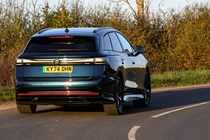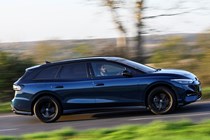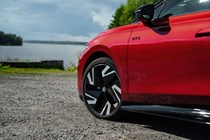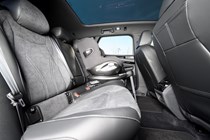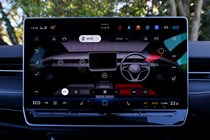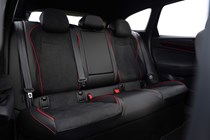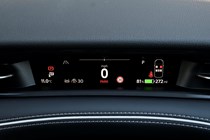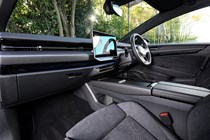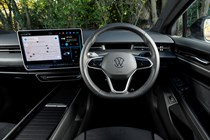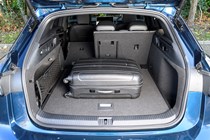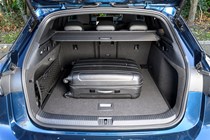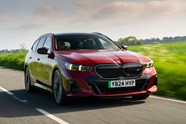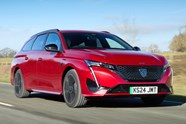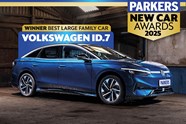
Volkswagen ID.7 Tourer review
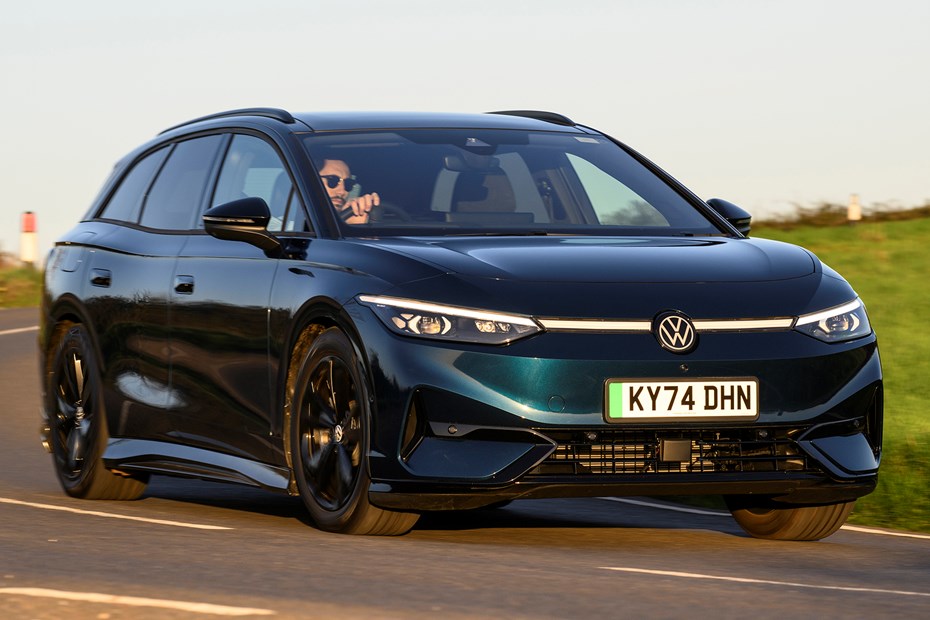
At a glance
| Price new | £51,795 - £59,380 |
|---|---|
| Used prices | £30,756 - £41,580 |
| Road tax cost | £620 |
| Insurance group | 37 - 38 |
Get an insurance quote with

|
|
| Fuel economy | 4.3 - 4.4 miles/kWh |
| Range | 352 - 424 miles |
| Miles per pound | 6.8 - 12.9 |
| Number of doors | 5 |
| View full specs for a specific version | |
Available fuel types
Fully electric
Pros & cons
- Very comfortable
- Tremendous electric range
- Spacious interior
- Expensive in top-spec trims
- Over-reliance on touchscreen
- GTX trim not worth the money
Volkswagen ID.7 Tourer rivals
Overview
Until recently, if you’ve wanted to own an electric estate car, your options have been limited. For a time there was only the bargain MG5 EV and expensive Porsche Taycan Sport Turismo. But as more electric cars launch and sales increase, this is changing. The latest electric estate car to arrive is the Volkswagen ID.7 Tourer.
It’s the first electric VW of this bodystyle and is based on the large ID.7 hatchback that went on sale early in 2024 as the firm’s flagship electric car. That was a car that left us impressed and we have equally high hopes for this Tourer, which we’ve now been behind the wheel of in in Sweden and back home in the UK. Read more about how we test at Parkers.
The ID.7 Tourer is a similar size to the Volkswagen Passat Estate, but sits higher off the ground to accommodate its battery pack beneath the floor. In fact, the ID.7 uses the largest battery fitted to a VW yet – a new 86kWh unit allowing for an exceptional claimed electric range of more than 400 miles. That makes it one of the longest-range EVs you can buy.
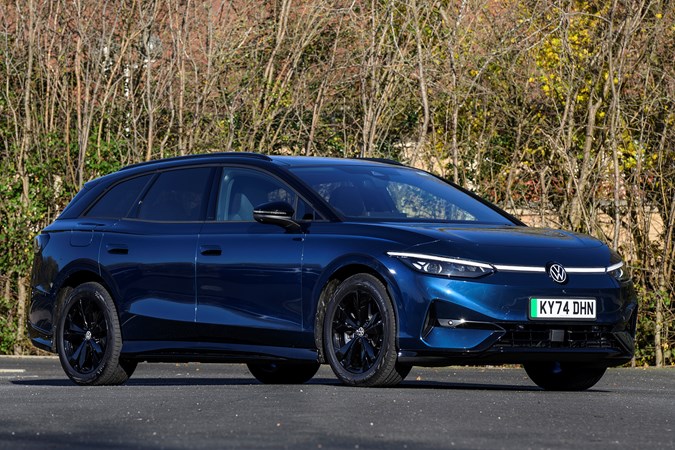
It follows the usual estate car formula by bringing more space than the standard hatchback, while Volkswagen is ushering in various changes to the ID.7 line-up to coincide with the launch of the Tourer. These include the aforementioned new battery but also a sportier dual-motor GTX model.
Technology updates include a new augmented-reality head-up display, while new games can be downloaded to play on the large 15.0-inch touchscreen to help occupy the time when you’re stopped at a charger. Carry on reading to see what we think of the new Volkswagen ID.7 Tourer and then ultimately whether you should buy one.
What’s it like inside?
Volkswagen’s first electric ‘ID’ cars – such as the ID.3 – were marked down for their interiors, which felt cheaper than we’re used to from this manufacturer, and the technology was tricky to use. VW has clearly put a lot of time and effort into improving things as the ID.7’s cabin is a massive improvement.
The material quality is a big step up, with soft-touch materials used throughout, and fancy backlit ambient lighting within the dashboard. The interior is still very minimalistic, with few physical buttons and the huge touchscreen that dominates the cabin.
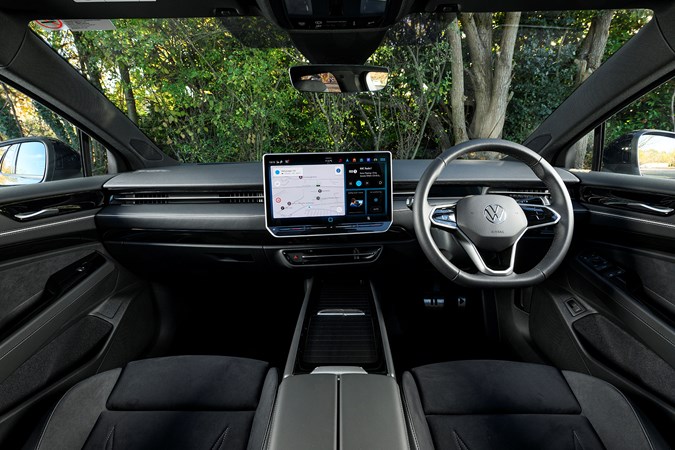
Though the screen is very responsive and quite easy to use on the move thanks to shortcut buttons, there are still far too many features controlled through it. You can’t change the air vents manually, for example, but have to it through the screen. It’s distracting and unnecessary. More pleasing is a full-length panoramic roof that doesn’t feature a sunblind, but instead a clever chemistry that can shut out the light at the press of a button.
But really, you’ll be looking at the ID.7 for its spaciousness and the Tourer doesn’t disappoint. The standard hatchback is hardly cramped, but the increased headroom adds another dimension of practicality to this EV. While not quite as spacious as a new Volkswagen Passat, by EV standards it’s impressive. The boot measures 605 litres with all seats upright, increasing to 1,714 litres with the rears folded. The rear seats drop 60:40 and there are handles in the boot for easier access, though they don’t fold completely flat.
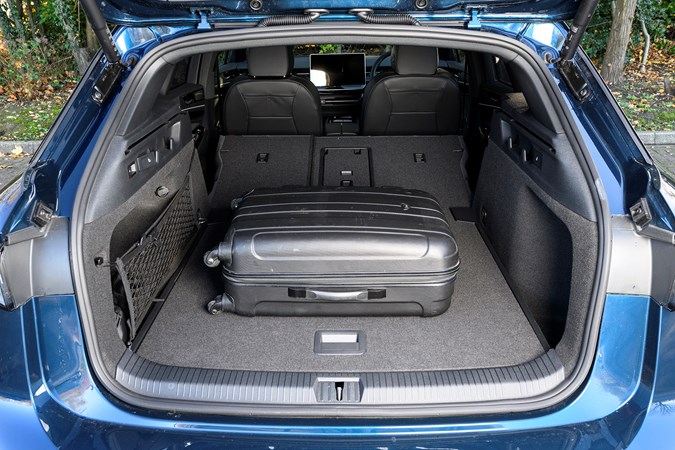
Rear seat space is generous as well, with taller adults not struggling for space in the back. There’s plenty of headroom and legroom, and not forgetting lots of storage, which makes this one very useful estate car.
Comfort
The ID.7 is a car designed primarily for comfort and refinement, and while we’ll come onto its driving attributes in later sections, the onboard comfort is unlikely to disappoint.
It’s a very relaxing way to travel, with the front seats offering lots of support and electrical adjustment – the front seat bases have cushion extensions too, making it ideal for taller drivers. As an added bonus, the ID.7 also comes as standard with front massaging seats, which are ideal for spending hours behind the wheel in, or to destress on a commute, for example.
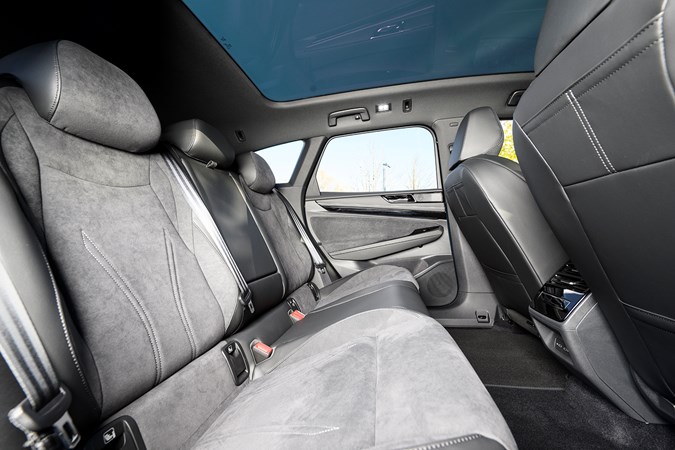
Safety
Safety is one of the ID.7’s best strengths, with the standard hatchback recording a five-star Euro NCAP rating when tested in 2023. Adult and child occupant protection scores of 95% and 88% are particularly impressive, and make it well suited to family car duties.
It’s also laden with driver assistance technology, with standard features including adaptive cruise control and clever LED Matrix headlights. You also get a head-up display, blind spot monitoring and a feature to stop you opening a car door into passing traffic. That’s just naming a few of the ID.7’s many pieces of safety kit.
Electric motors
When the ID.7 launched in early 2024, it was only available in a single ‘Pro’ guise, which uses a 77kWh battery – the same size as that used in the ID.Buzz and ID.4, for example, as well as wider Volkswagen Group models. It’s been joined by the Pro S and GTX, with both packing the larger, new 86kWh battery.
The Pro and Pro S models are each rear-driven by a single electric motor producing 286hp and 545Nm of torque (pulling power). Accelerating to 62mph will take 6.6 seconds, with the top speed capped to 112mph for efficiency reasons, as is the case for all ID.7s. The Pro S model is ever so slightly slower because of the extra weight of its battery, but the real-world difference is negligible.
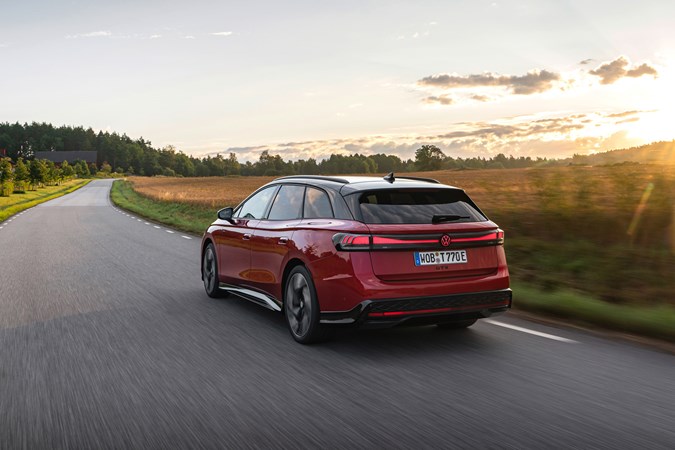
At the top of the range is the GTX (above), which adds a second smaller front electric motor, enabling 4Motion four-wheel-drive. It puts out 340hp and 560Nm of torque, making it the most powerful Volkswagen estate car ever – even ahead of the Volkswagen Golf R. It’s much quicker off the line thanks to its extra traction, with the 0-62mph time dropping to 5.5 seconds.
Range and charging
Efficiency is a real highlight of the ID.7, and that translates with even the entry-level Pro model having an exceptional electric range of 373 miles. But if you want to go even further, there’s the Pro S, as with its larger 86kWh battery, the range increases to an impressive 424 miles. Enough to get from London to York and back – theoretically.
The Tourer’s range is slightly down on the hatchback as the extended body isn’t quite as great for aerodynamics, but it’s still one of the longest ranges of any electric car – only the Mercedes EQS can go further from a full charge, and it’s even ahead of the Tesla Model 3’s 390-mile range.
It’s speedy to charge too, as a maximum DC charging rate of 200kW means that in ideal conditions, a 10 to 80% charge can take place in less than half an hour. Using a home or slower 11kW charger, it will take nine hours.
What’s it like to drive?
If you’re looking for a comfortable and relaxing electric car, you’ll struggle to find anything better at this price than the ID.7. Ride quality is exceptional, particularly when paired with Volkswagen’s adaptive chassis technology (called DCC) that lets you use a slider on the touchscreen to choose from 15 settings from comfort to sportiness.
In the most comfortable mode, the car glides along the surface to the point where all but the harshest of bumps are felt. You can put it in the sportiest mode, but it’s slightly at odds with the general feel of this VW. While the Tourer produces slightly more wind noise than the hatchback, it’s still a quiet car to travel in.
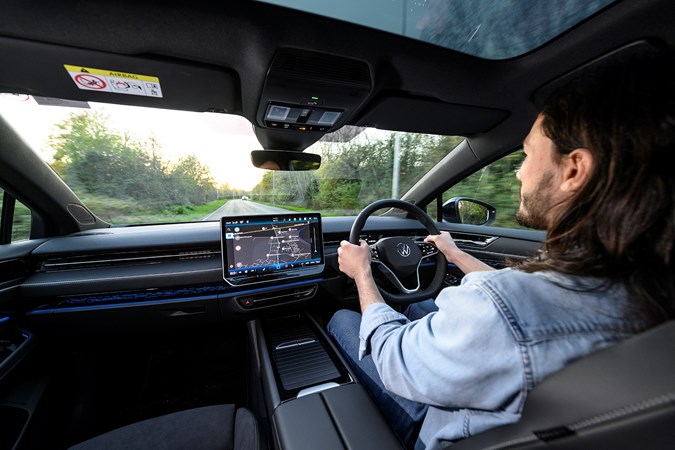
But despite this, the ID.7 never feels overly soft and wallowy. The ride and handling balance is well-judged, as the steering is accurate and makes the ID.7 very easy to place on even narrower roads – our test drive took us on some quite narrow back roads without issue.
If you want something that feels a bit sharper to drive, there is the ID.7 GTX. The nameplate is reserved for sporty electric Volkswagens and brings additional performance and small tweaks to the steering and ride. As with other GTX models, however, the difference isn’t significant, and the additional expense over the standard ID.7 Tourer is quite hard to justify.
What models and trims are available?
Volkswagen is offering the ID.7 Tourer in the same two trims as the standard hatchback – Match and GTX.
The level of standard equipment is particularly impressive, with all models coming with keyless entry, massaging front seats, an electric boot and touchscreen-driven infotainment.
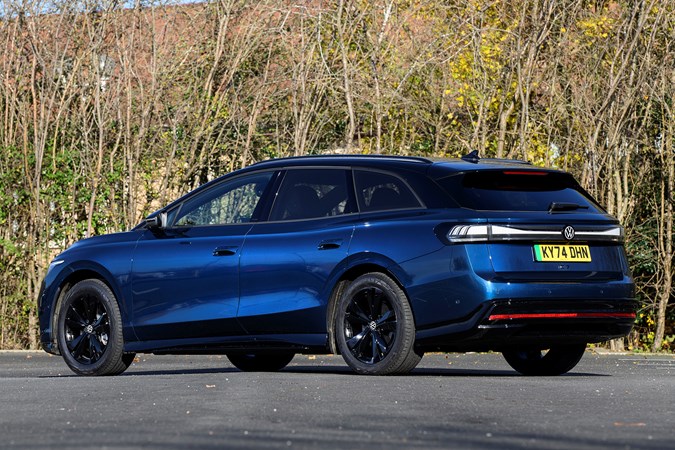
At the top of the range, the GTX brings additional performance and small mechanic changes, as well as a few added luxuries. These include a Harman Kardon sound system, ventilated front seats, rear heated seats and useful adaptive chassis control (DCC).
What else should I know?
The ID.7 Tourer commands a small premium over the hatchback, and across Europe is expected to be the best-seller. It sits in an unusual middle ground between much cheaper electric estate cars like the Peugeot E-308 SW, and much pricier wagons such as the £70,000 BMW i5 Touring. It certainly feels much closer to the BMW than it does the Peugeot.
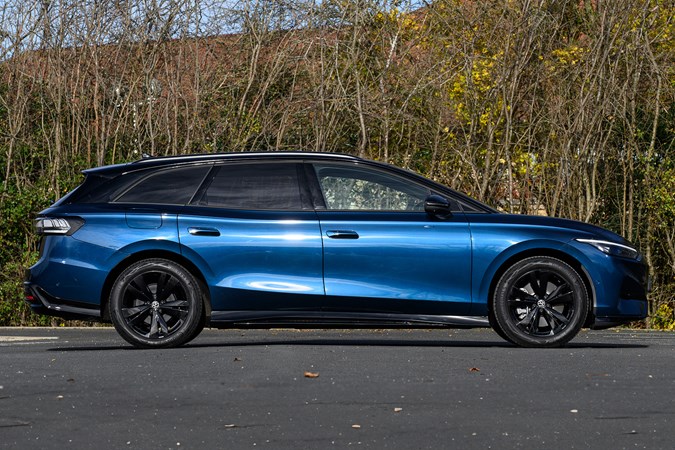
It’s also worth noting that the ID.7’s Tourer costs roughly the same as a similarly powerful Volkswagen Passat plug-in hybrid. Our money would go on the electric…
Read on for the Parkers verdict.







